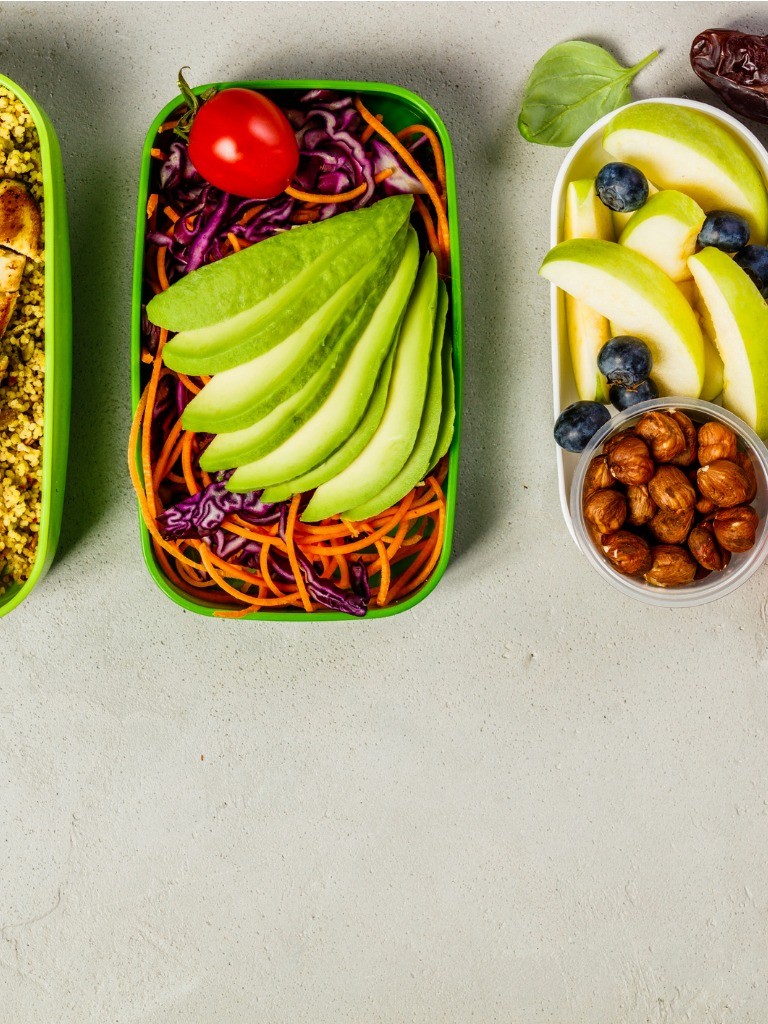4 Quick Steps to Calculate Your Macros
Many people find that tracking their macronutrients—protein, fat, and carbohydrates—is far easier than the total daily caloric intake. Instead of trying to add up thousands of calories throughout the day, you only have to focus on three smaller numbers.
Counting your macros can also help you curtail your diet throughout the day. For example, let’s say you’ve reached your carbohydrate limit for the day. From here, you would focus on meals that only contain protein and fat, such as a piece of salmon.
There is the challenge of finding and keeping track of macronutrients. The easiest way to get around this is to use a meal-tracking app such as MyFitnessPal, which allows you to search for pre-registered meal items, enter the portion size, and save these options for later use.
Instead of using a one-size-fits-all number, here are four quick steps to calculate your personalized daily macronutrients intake.
Determine Your Basal Metabolic Rate (BMR)
You will use the Harris–Benedict Equation to first determine how many calories you should eat each day. After you have your basal metabolic rate, or the number of calories that you need to eat within a day regardless of physical activity, we’ll break it down into macronutrients.
Simply plug in the relevant information into the following equation:
- Female = 655.1 + (4.35 × weight in pounds) + (4.7 × height in inches) – (4.7 × age in years)
- Male = 66 + (6.2 × weight in pounds) + (12.7 × height in inches) – (6.76 × age in years)
CALCULATING BMR
- Janet is a 31-year-old woman who weighs 147 pounds. She is 5’5” or 65 inches.
- 655.1 + (4.35 × weight in pounds) + (4.7 × height in inches) – (4.7 × age in years) = 1,455
Janet requires 1,454 calories to maintain her current weight—not including physical activity.
Calculate Your Total Daily Energy Expenditure (TDEE)
Next up, we need to determine your total daily energy expenditure. This is the number of calories that you burn in one day from all sources of physical activity, including work and the gym. Find the activity level that most closely matches how active you currently are—not how active you’d like to be.
Activity Level 1:
- Little or no exercise
- TDEE = 1.2 x BMR
Activity Level 2:
- Light exercise (1 to 3 days per week)
- TDEE = 1.375 x BMR
Activity Level 3:
- Moderate exercise (3 to 5 days per week)
- TDEE = 1.55 x BMR
Activity Level 4:
- Heavy exercise (6 to 7 days per week)
- TDEE = 1.725 x BMR
Activity Level 5:
- Hardcore exercise (Daily)
- TDEE = 1.9 x BMR
Once you have your activity level, multiply that number by your BMR. The result is your TDEE.
CALCULATING TDEE:
- Janet’s BMR (from above) is 1,454 calories.
- Janet’s activity level is moderate exercise (Activity Level 3).
- TDEE = 1.55 x BMR
- 1.55 x 1,454
- 2,254
- Given how active she is, Janet requires 2,254 calories each day to maintain her weight.
What is Your Body Type?
Hold tight to that number; we aren’t finished with it yet. Take a look at the body types below and find the one that most accurately describes you.
Endomorph Body Type
- Often called short and stocky
- Thicker build
- Slower metabolism
- Easy to gain fat, bulk up, or get bigger
- Difficulty with defining muscle tone
Mesomorph Body Type
- Often called athletic
- Leaner build
- Naturally higher metabolic rate
- Easy to gain lean muscle and burn fat
Ectomorph Body Type
- Often called a “hard gainer”
- Skinny build
- Very high metabolic rate
- Easy to lose weight
- Difficulty with gaining weight and putting on muscle mass
Once you have your body type, we can figure out your macronutrient split for each day.
Your Daily Macros
Depending on your body type, you will break down your total daily caloric intake or the number from above into the following percentages:
Endomorph Body Type
- 25% Carbohydrate
- 40% Protein
- 35% Fat
Mesomorph Body Type
- 35% Carbohydrate
- 35% Protein
- 30% Fat
Ectomorph Body Type
- 40% Carbohydrate
- 30% Protein
- 30% Fat
CALCULATING MACRONUTRIENTS
- Janet has an endomorph body type.
- Janet’s caloric intake is 2,256.
Janet’s Carbohydrates:
- 25% of 2,256 (.25 x 2256) = 564 calories from carbohydrates
Janet’s Protein:
- 40% of 2,256 (.40 x 2256) = 902 calories from protein
Janet’s Fat:
- 35% of 2,256 (.35 x 2256) = 790 calories from fat
One more step to go: One gram of each macronutrient equals a certain number of calories. To determine your macronutrients for each day, you need to divide by the following:
- Carbohydrates: 4 calories for 1 gram
- Protein: 4 calories for 1 gram
- Fat: 9 calories for 1 gram
MACRO BREAKDOWN
Janet’s Carbohydrates:
- Carbohydrates: 4 calories for 1 gram
- 564 / 4 = 141
- Janet needs to eat 141 grams of carbohydrates per day.
Janet’s Protein:
- Protein: 4 calories for 1 gram
- 902 / 4 = 226
- Janet needs to eat 226 grams of protein per day.
Janet’s Fat:
- Fat: 9 calories for 1 gram
- 790 / 9 = 88
- Janet needs to eat 88 grams of fat per day.
Tips for a Successful Diet
It’s important to remember that while this is a custom way to build your personalized macronutrient intake, we highly recommend meeting with a registered dietician (RD). A professional RD can take this one step further to assess your nutritional needs. Talking with an RD, you’ll be able to develop a comprehensive plan for reaching your fitness goals that factors in medical restrictions, digestive issues, and current recommendations from your doctor.
Contact an LVAC trainer for more tips!



